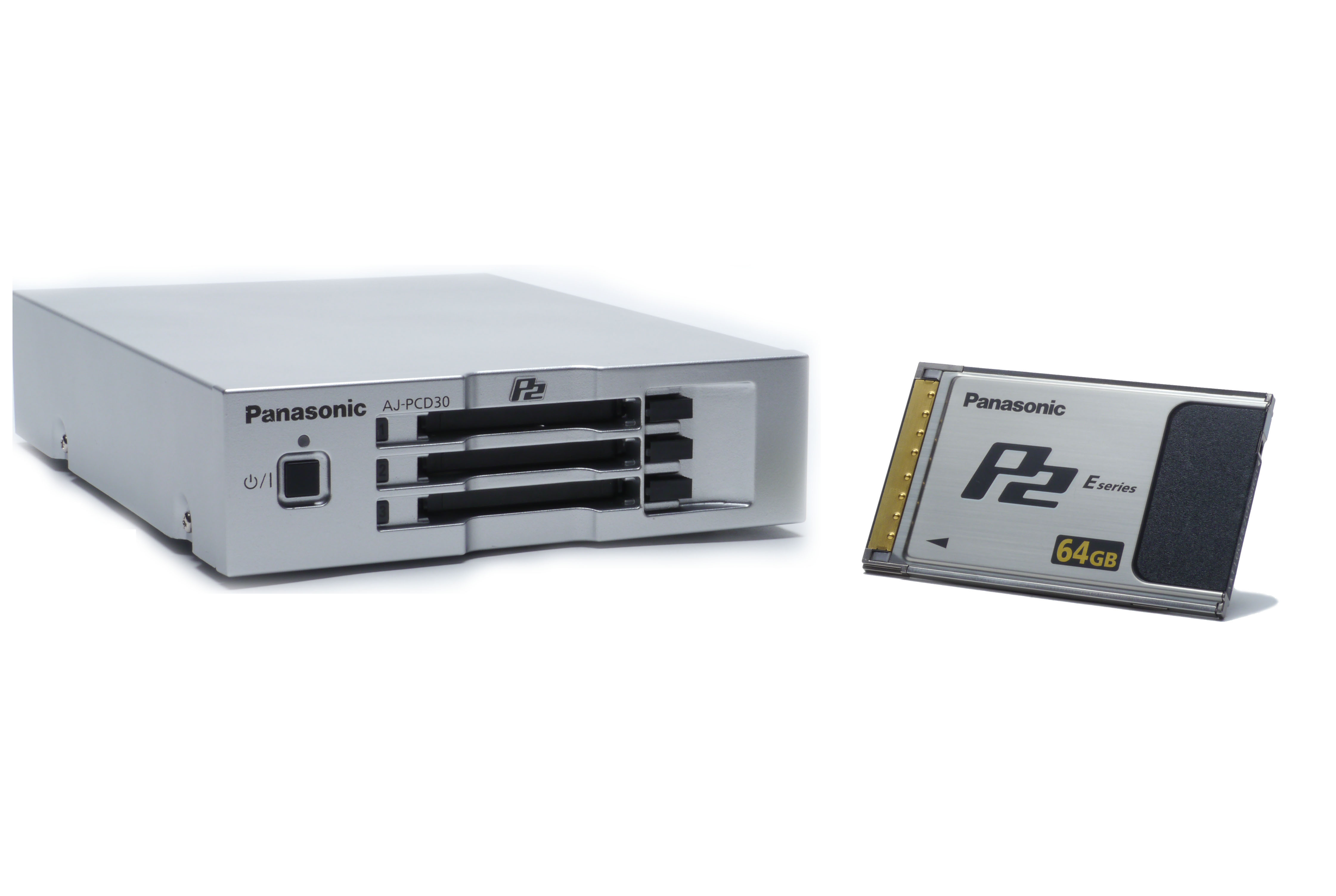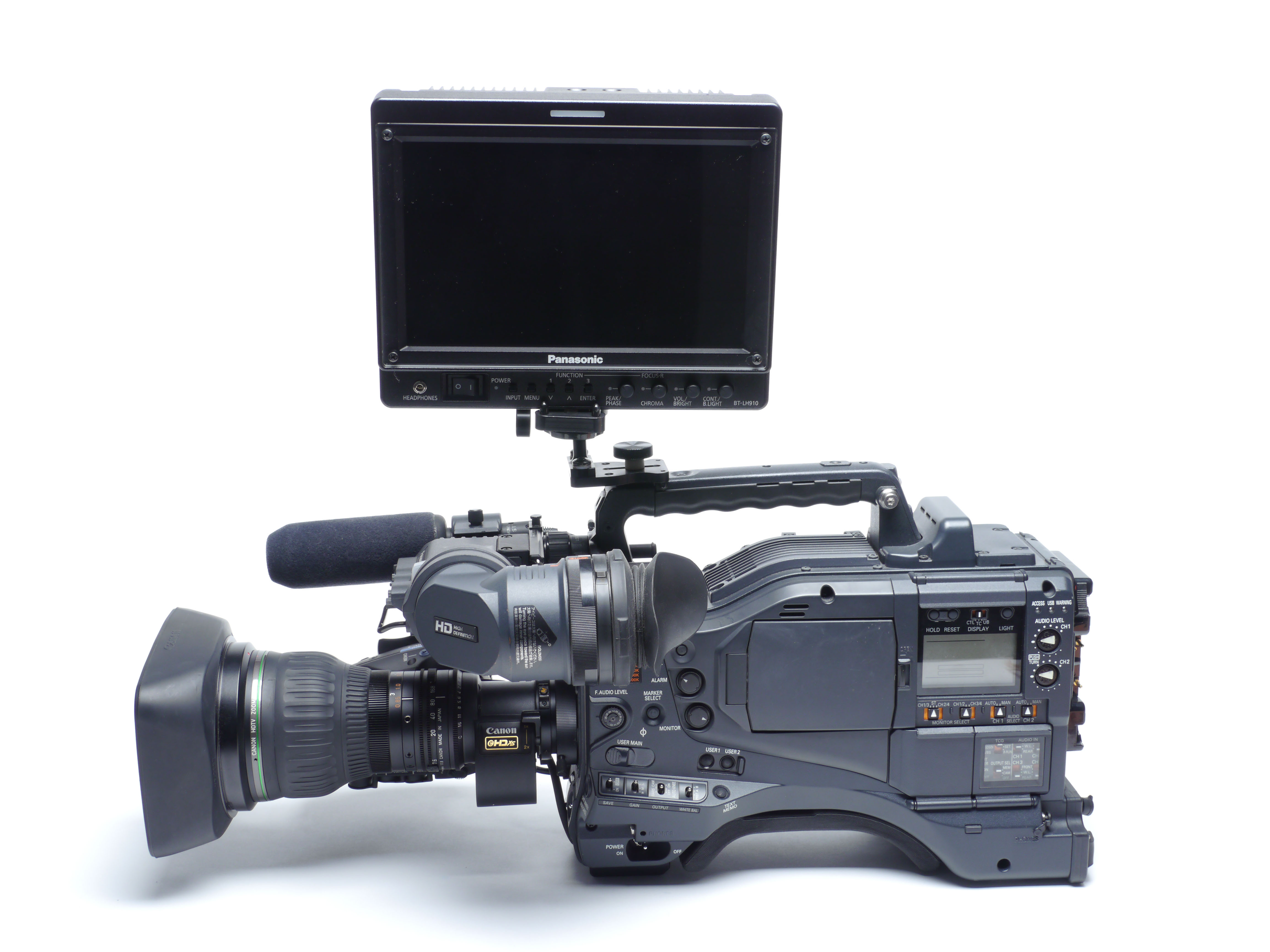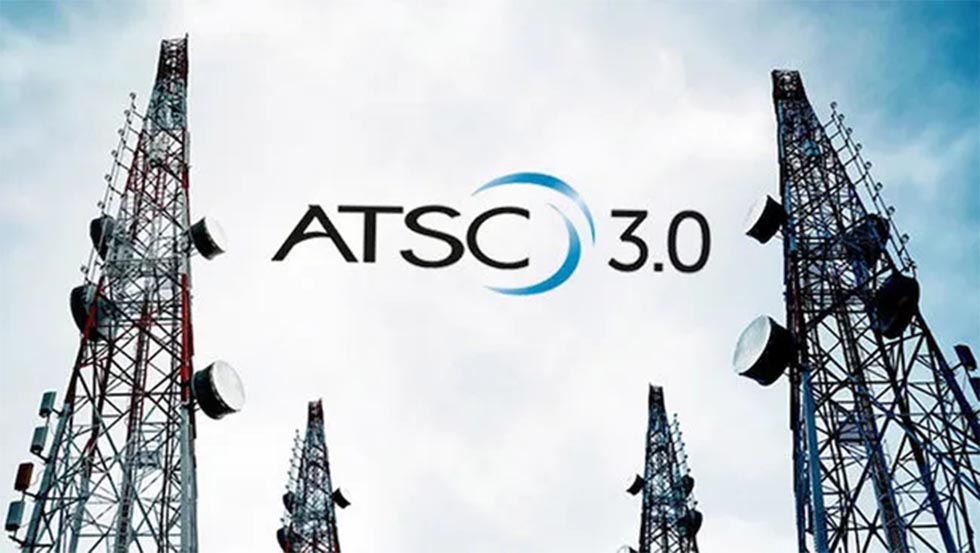Panasonic Drops Prices on P2 Cards
NEW YORK: Panasonic announced workflow enhancements to its P2 platform and AVCHD format in advance of the 2011 NAB Show. But it’s keeping mum on new camera debuts.
Panasonic is confident that combining its P2 solid state medium with AVC compression is the best formula for tapeless digital media production available today. And since most camera manufacturers have followed suit with their own solid-state formats since Panasonic introduced P2 in 2003, “we’re feeling pretty vindicated,” said Mike Bergeron, U.S. strategic technology liaison for Panasonic. As for AVC-Intra, which has for all intents and purposes replaced DVCPRO as the recording format for Panasonic products.
“We’re just hitting our stride as to its potential,” Bergeron said.

As evidence of P2’s maturity, the company announced price drops for its P2 E-Series recording medium effective this week. A 16 GB card now goes for $380; 32 GB costs $480 and the price for a 64 GB card dropped 30 percent to $695.
A new P2 drive will also debut at the show. The AJ-PCD30 P2 drive is a three-slot device with USB 3.0, offering significantly higher transfer rates of up to 4.8 Gbps, which allows offloading of AVC-Intra footage at more than 15x real-time, making the PCD30 especially well-suited for long-form production. It will be available this summer with a list price of $2,255.
Panasonic is also debuting a new wireless system that it predicts will help “break down the barriers to solid state.” The AJ-WM30 wireless module with AJ-SFU3100 software can be used to seamlessly transfer critical camera information from Panasonic’s new AJ-HPX3100 master quality 1080p P2 camcorder to a range of intelligent devices, including PCs, iPads and iPhones via WiFi. The module and software will be available in April, with suggested list prices of $150 and $1,500, respectively. The company expects to make this capability available for other Panasonic products in the future as well.
Archiving software for long-time storage of P2 content is also being introduced. The AJ-SF100 Video Ingest software is for archiving P2 files to LTO, Blu-ray or other storage devices, while AJ-SD110 software is for video ingest via IEEE-1394 or SDI. The AJ-SF100 and the AJ-SF110 software will be available in May at prices of $5,000 and $2,500, respectively.
Panasonic is also introducing new software for its AVCCAM platform. AVCCAM Importer software is a QuickTime plug-in that eliminates the need to convert AVCHD files to PreRES422 files before editing in Final Cut Pro. It will be available this summer as a free download.
No Panasonic NAB booth would be complete without new monitors. The BT-LH910, a new 9-inch LCD monitor for field and studio applications features a new high brightness, high contrast IPS panel that affords the best picture quality in its class; newly developed 3D assist functions; professional interfaces including HDMI and 3G-SDI; and 1280x768 WXGA pixel resolution, the highest in the 9-inch and under professional LCD monitor category. The monitor, which will be available in April for a price of $3,500, can be used on-camera as an electronic viewfinder, on location, and in mobile or live settings.
A new solid state deck with 3D capability will be highlighted at the booth as well. The AG-HPD24 P2 deck features 3D synchronized record/playback, native 24P recording with variable frame rates, USB 3.0 interface; and 24-bit, four channel audio recording in AVC-Intra 100/50. Two of the HPD24 units can be synchronized for master-quality, full-resolution isolated left/right channel 3D recording, either from cameras mounted on a 3D rig or the company’s AG-3DA1 integrated dual-lens 3D camcorder. Two HPD24s can likewise be synchronized for full HD-SDI 3D or 3D HDMI playback. The product will be available this summer at a targeted list price of less than $6,000.
Panasonic will also showcase new 3D capability for its AV-HS450 16-input production switcher. Up to nine 3D cameras can be applied using the new 3D SDI output board. Vertical/horizontal reversing and position correction are possible for all 16 channels of SDI standard inputs. Correction using a 3D rig can also be easily done on-site.
Panasonic officials said “more significant” product announcements--presumably to include cameras--will be made just prior to the show.
-- Tom Butts


The professional video industry's #1 source for news, trends and product and tech information. Sign up below.
